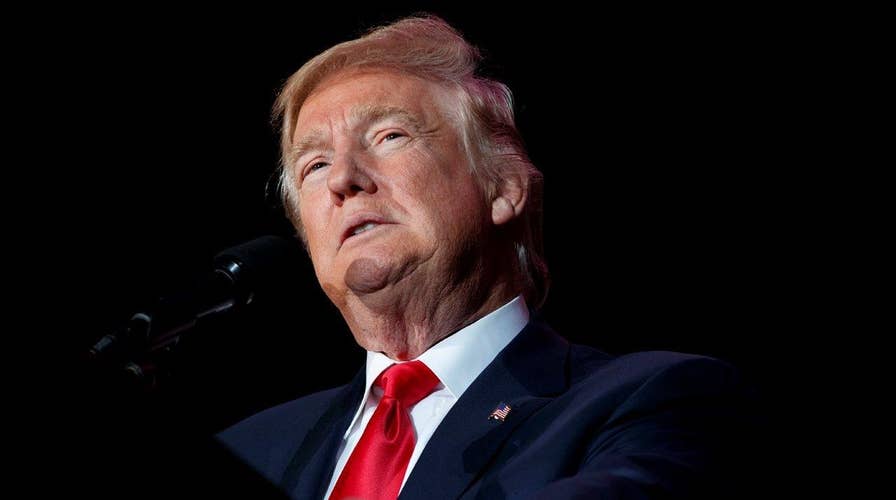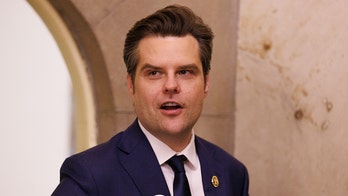Trump transition denies large-scale restructuring of intel
The DNI chief Clapper will brief President-elect Trump on suspected Russian hacking; John Roberts explains on 'Special Report'
WASHINGTON – As Congress prepares to certify Donald Trump's election as president on Friday, it will follow a system set up by the Founding Fathers.
The Founders feared a direct, “popular” election of the president. So while the Founders erected a system for eligible voters to cast ballots for president, they simultaneously constructed a series of circuit-breakers to potentially curb the will of the masses. This diffusion of political power when selecting a chief executive is the quintessence of the Electoral College.
The first circuit-breaker is the Electoral College itself. The Founders distributed “electoral votes” based on the population of each state. They granted the smallest states a minimum of three electoral votes – based on the standard distribution of at least two U.S. Senators and one member in the U.S. House of Representatives. But bigger states would command more sway in the Electoral College, because, well, they were bigger. Hence, the reason New York and Virginia were power players in the early years.
In essence, voters were choosing “electors” for their state who would cast ballots on behalf of the candidate who emerged victorious. However, electors are free to vote the way they want and not bound to the candidate who prevails in a state. That produces the periodic phenomenon of “faithless” electors casting ballots in the Electoral College.
Twenty-nine states and Washington, D.C. have laws latching electors to candidates. But those statutes are generally viewed as unenforceable. There have only been 157 instances of faithless electors for president or vice president in the history of the republic, and none has swayed the outcome of an election.
Prior to this cycle, the last faithless elector incident came in 2004. An unknown elector from Minnesota cast his or her ballot for then-Sen. John Edwards, D-N.C., the Democrats’ vice presidential nominee, instead of now-Secretary of State John Kerry, then the Democratic standard-bearer.
In the 2016 election, two Texas electors broke from President-elect Trump. One cast a ballot for Ohio Gov. John Kasich. One voted for former Rep. Ron Paul, R-Texas. In Washington state, there were four faithless electors. Three Washington electors pledged to Hillary Clinton voted for Colin Powell. One voted for Native American activist Faith Spotted Eagle. In Hawaii, a Clinton elector voted for Sen. Bernie Sanders, I-Vt.
That gave Trump 304 votes in the final electoral tally to Clinton's 227.
The Archivist of the United States has transmitted the electoral certificates provided by the governors to both the House and Senate.
The Electoral College vote will be officially tabulated Friday, when Congress holds a Joint Meeting with Speaker of the House Paul Ryan, R-Wis., and Vice President Joe Biden presiding.
Congress will tabulate the states' electoral slates in alphabetical order. Four vote counters, known as tellers and typically two House and two Senate members, will announce the results.
If there is a dispute over a state's electors, a debate can be called. This is the second circuit-breaker, and is in accordance with the Founders' dictate that the House and Senate would serve as the ultimate arbiter of each state’s electoral slate.
If there’s a disagreement, a member of the House and Senate must jointly contest an individual state’s electoral ballots. If that happens, the House and Senate would dissolve into their separate bodies, debate the issue for two hours and then vote to accept or reject that state’s electoral vote. Both houses would later reconvene to finally settle the issue.
In early 2001, various members of the Congressional Black Caucus (CBC) aimed to challenge Florida’s electoral slate from the previous fall’s disputed presidential election. Then-Vice President Gore repeatedly asked each CBC member if they had a Senate sponsor to jointly contest the Florida electoral slate. None did.
“I don’t care that it is not signed by a senator,” famously proclaimed Rep. Maxine Waters, D-Calif., when pressed by Gore if she had a Senate advocate.
The irony of course is that the person who stood to benefit from a successful challenge of Florida’s electoral ballot was none other than Gore – the 2000 Democratic Presidential nominee.
In other words, this was getting awkward.
But not for long.
“The chair would advise that the rules do care,” Gore chastened Waters as he rejected her petition.
The move triggered applause from Congressional Republicans in the House chamber.
In January 2005, then-Rep. Stephanie Tubbs Jones, D-Ohio, challenged her home state's electoral slate during Joint Meeting over reports of voting irregularities during the 2004 election. This time, Tubbs Jones found a Senate patron in Sen. Barbara Boxer, D-Calif. The House and Senate met separately to debate and vote on the objection, eventually finding Ohio's electoral votes to be in order. As a result, then-President George W. Bush secured a second term in the White House.
There is a final circuit-breaker. Let’s say the House and Senate cannot settle a dispute over the electoral vote and no candidate reaches the magic number of 270? That’s when the House decides the president in what is called a “contingent” election. This has only happened twice in U.S. history. The House votes by state delegation (one vote per state, so California is no more influential than, say, North Dakota). A contingent election in 1801 elected Thomas Jefferson. The contingent election of 1825 tapped John Quincy Adams.





